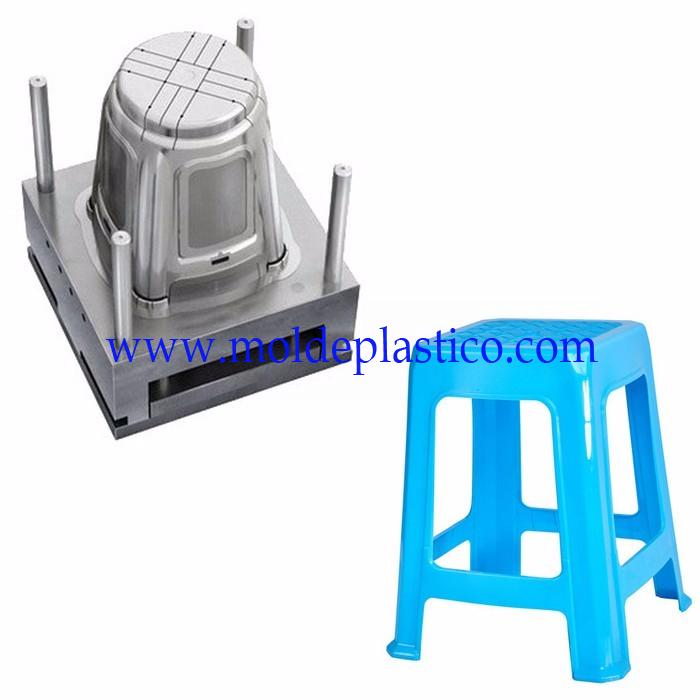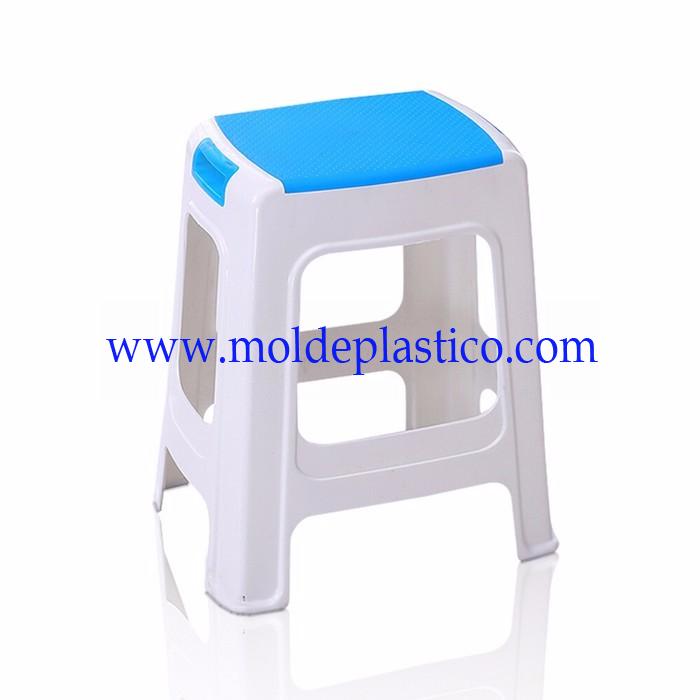Description
Looking for a manufacturer and designer of plastic stool mould that can enhance the profitability of your company? Featuring a full-service, custom stool mould offering, MOLDEPLASTICO is the place to go.
Every phase of your product life cycle will be simplified by our process; from the concept stage and beyond to a work-in-progress , our service streamlines your process at every stage.
Designers must understand that, whether the cavity is gated at the edge or near the center of the stool product, most or all of the plastic will flow toward the parting line.
The air that was inside the cavity space before the mold was clamped up must now escape to
permit easy filling of the cavity,
prevent burning of the leading edge of the plastic, or
eliminate the possibility of unfilled spots forming in the product.
Venting at the parting line is no problem; therefore, a surface ending there can always be well vented using simple methods well known to the mold designer.
(Unfortunately, the same cannot be said about venting for ribs, hubs, etc.; this will be covered later.)
The shape of the product, at the parting line, needs special considerations:
What shape is required for the product? A sharp edge? A rounded edge?
Which shape is easier to produce when building the mold?
In Fig.below, the wall surface ends with a sharp comer (5) on the outside (: it the parting line) and a radius (R) on the inside. This is a “natural” shape.
The corner S is sharp because two mold parts meet there.
The radius R represents the cutting corner of the milling, turning, or grinding tool used to produce this corner.
For increased core strength (to reduce the notch effect and the resultant weakness of the core), the radius R should be as large as possible.
It is not practical to specify a corner radius smaller than 0.25 mm (0.010 in.). With this shape (Fig. 1), there is no problem with mismatch between cavity and core.
The radius on the inside of the cavity shown in Fig. 4.12 should also be as large as possible, partly for the same (strength) reasons, but also because a round comer will improve the molding condition by allowing easier flow around a radius.
In contrast, a sharp corner increases the thickness of the product without adding to its strength.
The sharp corner at the top of the core is easy to make but is not a good shape for the plastic flow.
We will look at this particular area later on.
In Fig. 1, the plastic stool mould design requires a rounded edge at the end of the side wall, so the parting line must be shifted to where the radius meets the outside wall created by the cavity.
There is usually no particular reasoning against this design, except that it is somewhat more expensive to produce.
For very light products, especially when stripper ejection is used, the radius that is cut into the stripper might cause the product to hang up and not fall free from the mold.
Special mold features such as air blow off or mold wipers may then be required to ensure that all pieces have ejected.
There is usually no problem with heavier molded pieces weighing maybe 20 grams or more.
The main problem with a rounded edge at the end of the wall is that mismatch is possible between the cavity and core which can result in a small but sharp comer (ridge) where it might not be acceptable for the product (Fig. 2).
An example is the rim of a drinking cup, where a ridge could be disagreeable on the lips when drinking from such a cup.

 English
English Español
Español Português
Português








